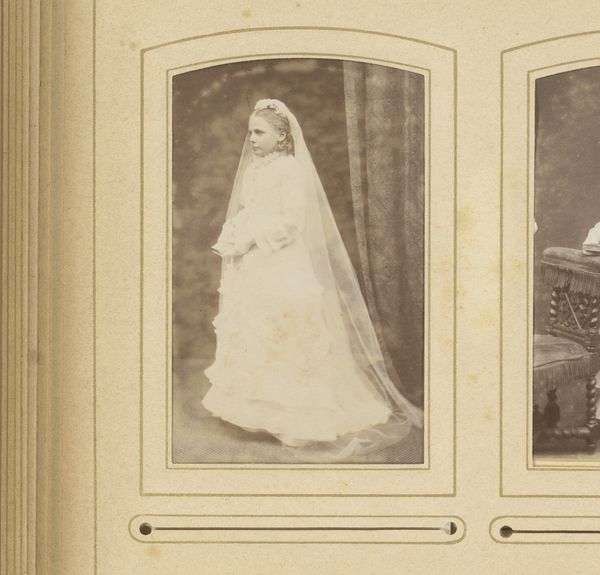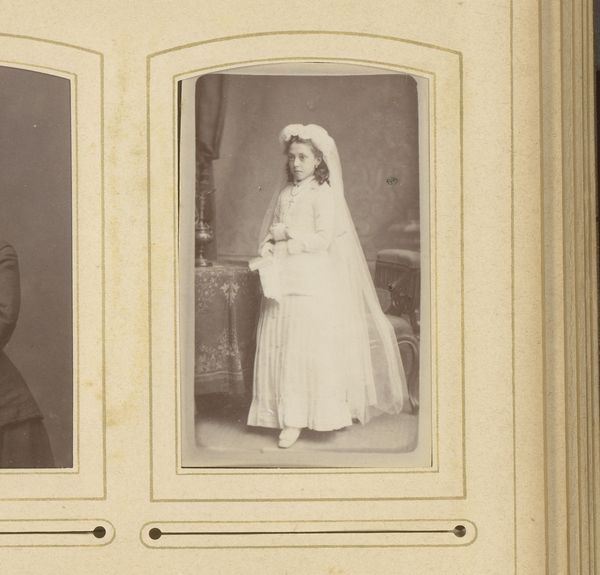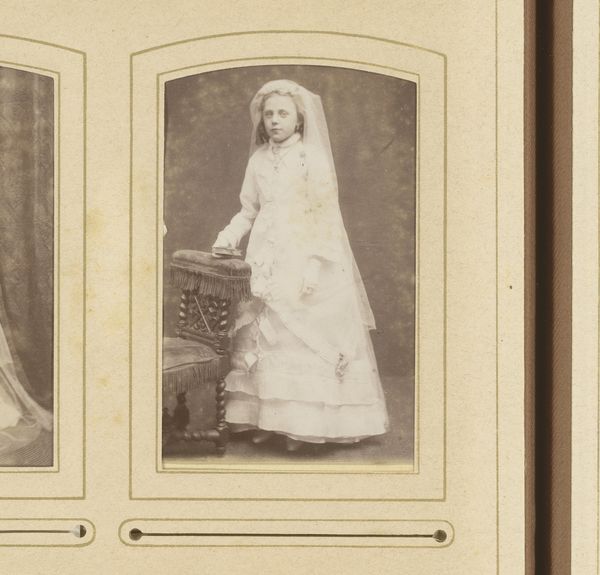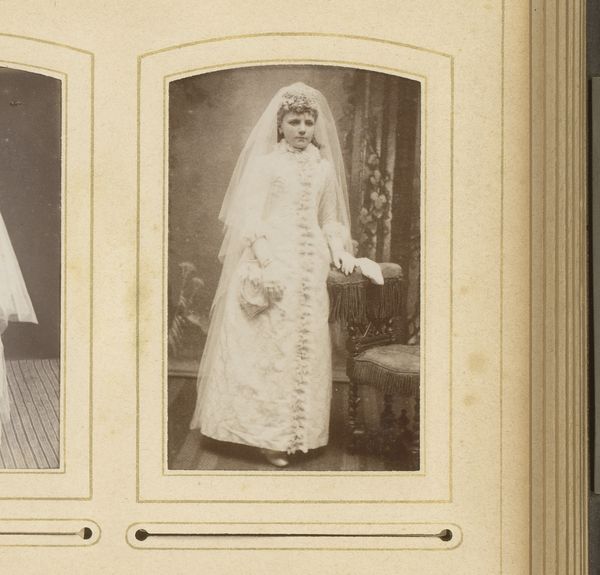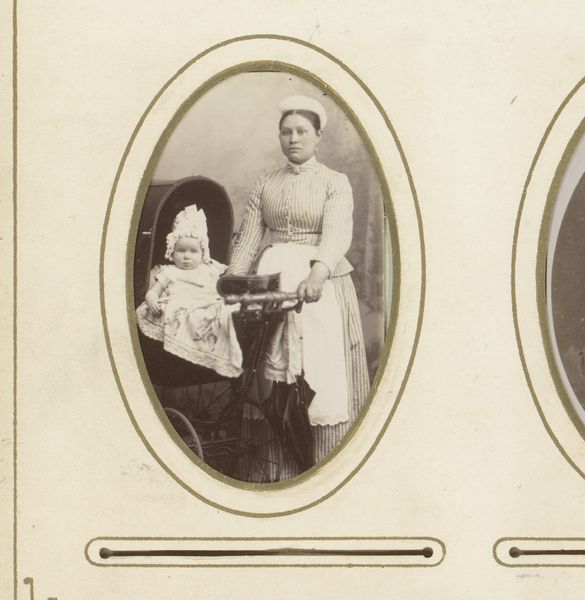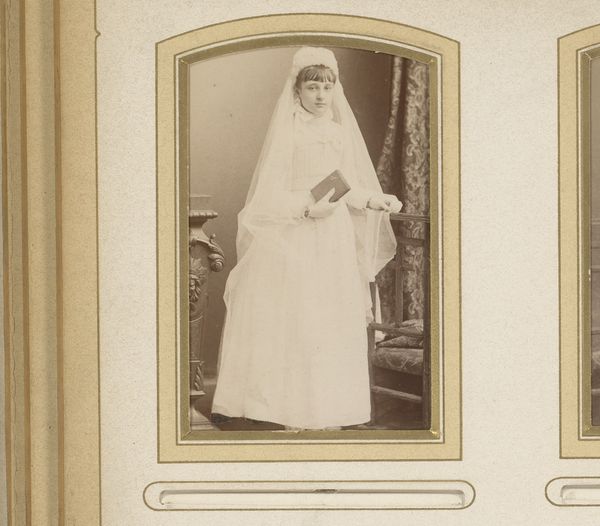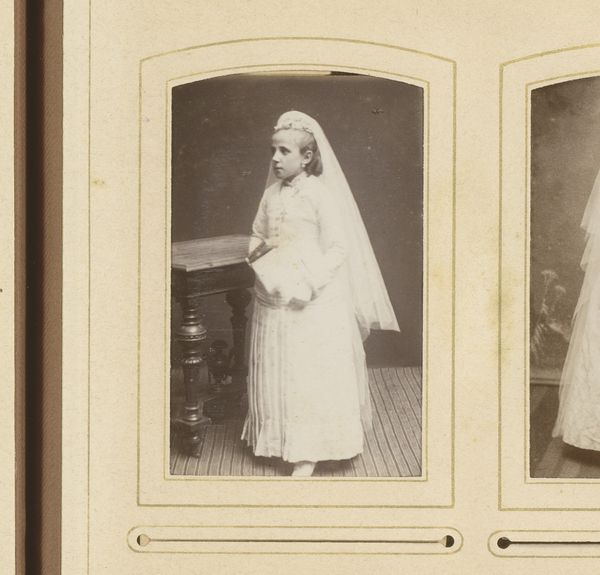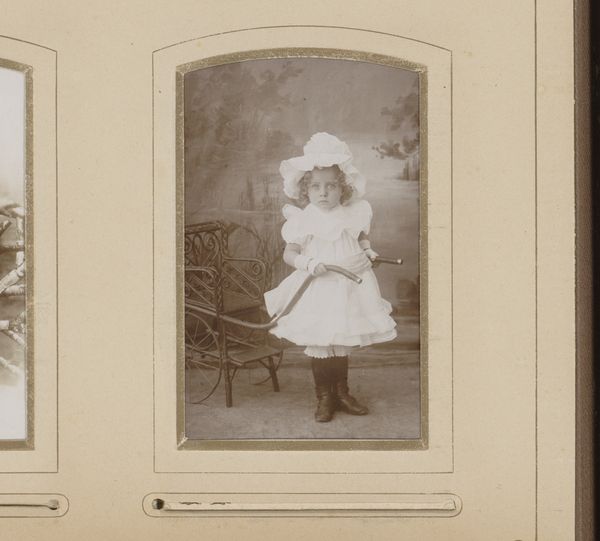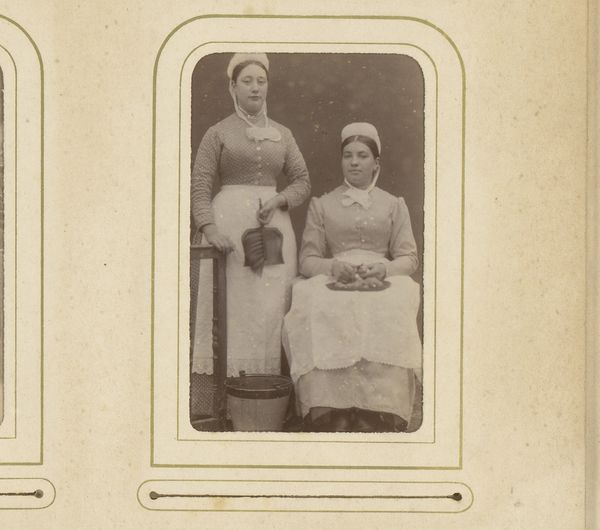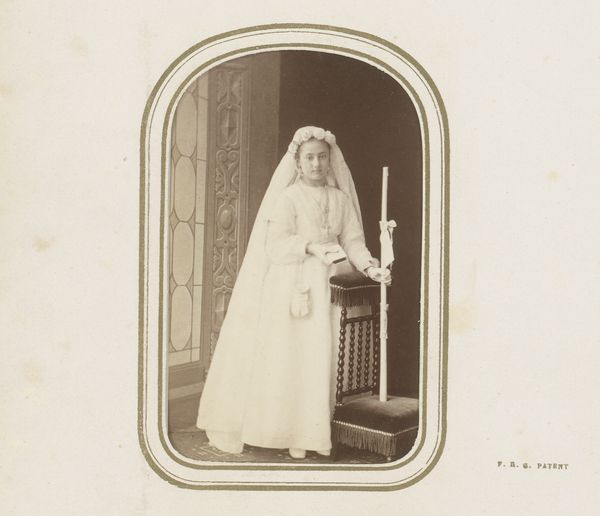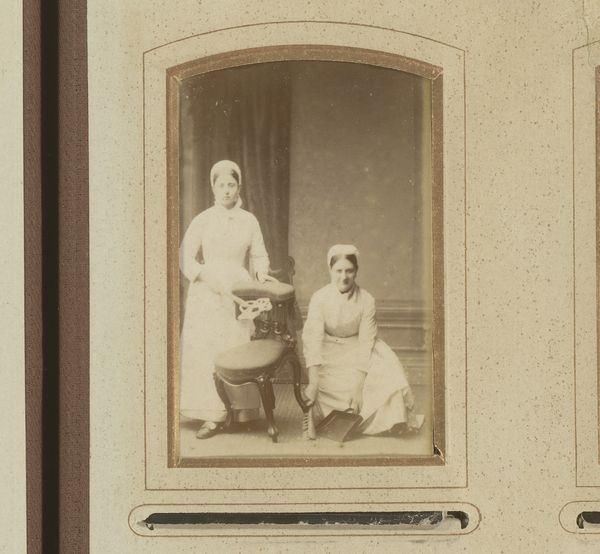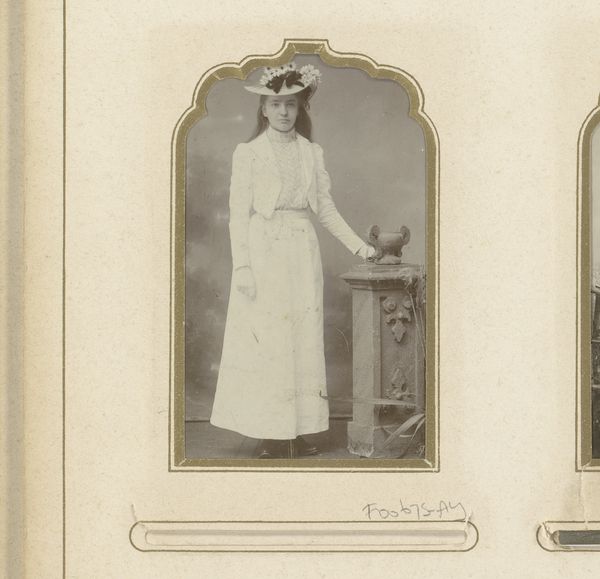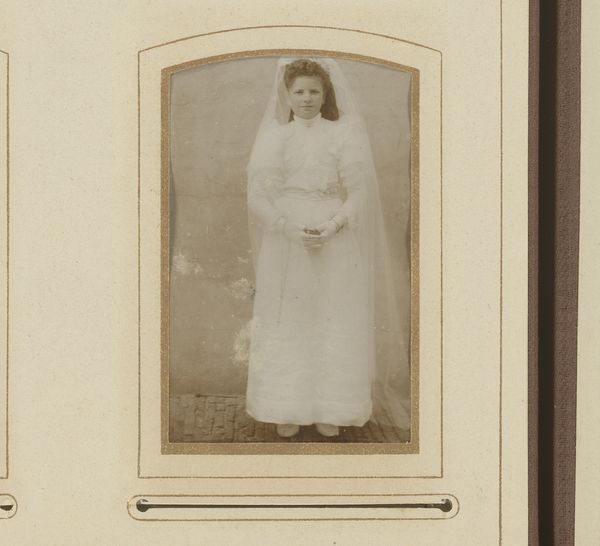
photography, gelatin-silver-print
#
portrait
#
photography
#
historical photography
#
gelatin-silver-print
#
19th century
#
genre-painting
Dimensions: height 82 mm, width 53 mm
Copyright: Rijks Museum: Open Domain
Curator: Looking at this portrait, it feels like stepping into a dream, a soft echo of the past whispering secrets about faith and childhood. Editor: The dream is definitely sepia-toned! It’s a gelatin-silver print, most likely taken between 1882 and 1911. Notice the frame around the image: it's part of a larger photo album page, meant to contain and display family history. Curator: Indeed, it’s titled "Portret van een meisje in communiejurk, knielend op een bidstoel" - a portrait of a girl in her communion dress, kneeling at a prie-dieu. The image itself holds a certain fragility, doesn’t it? It almost seems about to fade away entirely like memory. Editor: Fragility suits the medium. Gelatin silver prints gained popularity for their relative ease of mass production and consistency, which democraticized image-making but raised concerns around craft versus consumerism in the photographic industry. This print is evidence of a specific time and process. Curator: I see the dress more than the process, or the album it inhabits. The white fabric seems to float, it gathers the light and she almost disappears into the purity. Do you get a sense that she's perhaps burdened, a little lost? It feels bittersweet somehow, like all coming-of-age moments often are. Editor: I think "bittersweet" sums it up. The formality is fascinating. Consider how carefully she's posed and how that speaks volumes about class, expectation, and the societal roles she will perform as she grows. These early photographic formats often dictated stillness for clear exposure. Curator: Yes, and stillness becomes something much bigger than just an accident of technique: it becomes an ideal, a kind of perfection or transcendence maybe…It certainly adds to this overall sense of a quiet, intense experience that almost feels holy. Editor: Exactly. Holy, historical, but also handmade! These were constructed albums and images that carry more labor than is visible, reminding us that photographic prints were material objects before the age of digital reproductions. It challenges ideas about reproduction. Curator: Thank you. This photograph—it certainly lingers longer than a first glance might suggest. Editor: Agreed. I’m newly attentive to the hands that held this long ago and shaped our perspectives then as much as we attempt to today.
Comments
No comments
Be the first to comment and join the conversation on the ultimate creative platform.
